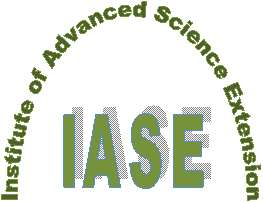International
ADVANCED AND APPLIED SCIENCES
EISSN: 2313-3724, Print ISSN: 2313-626X
Frequency: 12
![]()
Volume 8, Issue 12 (December 2021), Pages: 1-8
----------------------------------------------
Original Research Paper
Title: Classification methods comparison for customer churn prediction in the telecommunication industry
Author(s): Moh Makruf 1, *, Arif Bramantoro 2, Hasan J. Alyamani 3, Sami Alesawi 3, Ryan Alturki 4
Affiliation(s):
1Faculty of Information Technology, Universitas Budi Luhur, Jakarta, Indonesia
2School of Computing and Informatics, Universiti Teknologi Brunei, Bandar Seri Begawan, Brunei
3Faculty of Computing and Information Technology in Rabigh, King Abdulaziz University, Jeddah, Saudi Arabia
4Department of Information Science, College of Computer and Information Systems, Umm Al-Qura University, Makkah, Saudi Arabia
* Corresponding Author.
 Corresponding author's ORCID profile: https://orcid.org/0000-0003-2772-9427
Corresponding author's ORCID profile: https://orcid.org/0000-0003-2772-9427
Digital Object Identifier:
https://doi.org/10.21833/ijaas.2021.12.001
Abstract:
The need for telecommunication services has increased dramatically in schools, offices, entertainment, and other areas. On the other hand, the competition between telecommunication companies is getting tougher. Customer churn is one of the areas that each company gains more competitive advantage. This paper proposes a comparison of several classification methods to make a prediction whether the customers cancel the subscription to a telecommunication service by highlighting key factors of customer churn or not. The comparison is non-trivial due to the urgent requirements from the telecommunication industry to infer the most appropriate techniques in analyzing their customer churn. This comparison is often of huge commercial value. The result shows that Artificial Neural Network (ANN) can predict churn with an accuracy of 79%, Support Vector Machine (SVM) with 78% accuracy, Gaussian Naïve Bayes, and K-Nearest Neighbor (KNN) with 75% accuracy, while Decision Tree with 70% accuracy. Moreover, the technique with the highest F-Measure is Gaussian Naïve Bayes with 65% and the technique with the lowest one is Decision Tree with 49%. Hence, ANN and Gaussian Naïve Bayes are two methods with high recommendation to predict the customer churn in the telecommunication industry.
© 2021 The Authors. Published by IASE.
This is an
Keywords: Customer churn, Decision tree, Artificial neural network, Gaussian Naïve Bayes, Support vector machine, K-nearest neighbor
Article History: Received 16 April 2021, Received in revised form 13 July 2021, Accepted 9 September 2021
Acknowledgment
No Acknowledgment.
Compliance with ethical standards
Conflict of interest: The author(s) declared no potential conflicts of interest with respect to the research, authorship, and/or publication of this article.
Citation:
Makruf M, Bramantoro A, and Alyamani HJ et al. (2021). Classification methods comparison for customer churn prediction in the telecommunication industry. International Journal of Advanced and Applied Sciences, 8(12): 1-8
Figures
Fig. 1 Fig. 2 Fig. 3 Fig. 4 Fig. 5
Tables
----------------------------------------------
References (15)
- Abiodun OI, Jantan A, Omolara AE, Dada KV, Mohamed NA, and Arshad H (2018). State-of-the-art in artificial neural network applications: A survey. Heliyon, 4(11): e00938. https://doi.org/10.1016/j.heliyon.2018.e00938 [Google Scholar] PMid:30519653 PMCid:PMC6260436
- ApurvaSree G, Ashika S, Karthi S, Sathesh V, Shankar M, and Pamina J (2019). Churn prediction in telecom using classification algorithms. International Journal of Scientific Research and Engineering Development, 5: 19-28. [Google Scholar]
- Barus DT, Elfarizy R, Masri F, and Gunawan PH (2020). Parallel programming of churn prediction using Gaussian Naïve Bayes. In the 8th International Conference on Information and Communication Technology, IEEE, Yogyakarta, Indonesia: 1-4. https://doi.org/10.1109/ICoICT49345.2020.9166319 [Google Scholar] PMid:32154151 PMCid:PMC7034176
- Bramantoro A, Hassine AB, Matsubara S, and Ishida T (2015). Multilevel analysis for agent-based service composition. Journal of Web Engineering, 14(1&2): 63-79. [Google Scholar]
- Cortes C and Vapnik V (1995). Support-vector networks. Machine Learning, 20(3): 273-97. https://doi.org/10.1007/BF00994018 [Google Scholar]
- Coussement K, Lessmann S, and Verstraeten G (2017). A comparative analysis of data preparation algorithms for customer churn prediction: A case study in the telecommunication industry. Decision Support Systems, 95: 27-36. https://doi.org/10.1016/j.dss.2016.11.007 [Google Scholar]
- Dahiya K and Bhatia S (2015). Customer churn analysis in telecom industry. In the 4th International Conference on Reliability, Infocom Technologies and Optimization (Trends and Future Directions), IEEE, Noida, India: 1-6. https://doi.org/10.1109/ICRITO.2015.7359318 [Google Scholar] PMid:26827852
- Jain H, Khunteta A, and Srivastava S (2020). Churn prediction in telecommunication using logistic regression and logit boost. Procedia Computer Science, 167: 101-12. https://doi.org/10.1016/j.procs.2020.03.187 [Google Scholar]
- Khan Y, Shafiq S, Naeem A, Hussein S, Ahmed S, and Safwan N (2019). Customer churn prediction using artificial neural network (ANN) in telecom industry. International Journal of Advanced Computer Science and Applications, 10: 132-142. https://doi.org/10.14569/IJACSA.2019.0100918 [Google Scholar]
- Maxim LG, Rodriguez JI, and Wang B (2020). Defect of Euclidean distance degree. Advances in Applied Mathematics, 121: 102101. https://doi.org/10.1016/j.aam.2020.102101 [Google Scholar]
- Murakami Y, Tanaka M, Bramantoro A, and Zettsu K (2012). Data-centered service composition for information analysis. In the 9th International Conference on Services Computing, IEEE, Honolulu, USA: 602-608. https://doi.org/10.1109/SCC.2012.88 [Google Scholar]
- Palmer T (2019). Predict and optimize business outcomes with IBM decision optimization for Watson studio and IBM Cloud Pak for data. The Enterprise Strategy Group, Milford, USA. [Google Scholar]
- Pamina J, Raja B, SathyaBama S, Sruthi MS, and Aiswaryadevi VJ (2019). An effective classifier for predicting churn in telecommunication. Journal of Advanced Research in Dynamical and Control Systems, 11(01-Special Issue): 221-229. https://doi.org/10.5373/JARDCS/V11SP11/20193050 [Google Scholar]
- Quinlan JR (2014). C4.5: Programs for machine learning. Elsevier, Amsterdam, Netherlands. [Google Scholar]
- Russell I and Markov Z (2017). An introduction to the Weka data mining system. In the 2017 ACM SIGCSE Technical Symposium on Computer Science Education, Association for Computing Machinery, Seattle, USA: 742. https://doi.org/10.1145/3017680.3017821 [Google Scholar]

